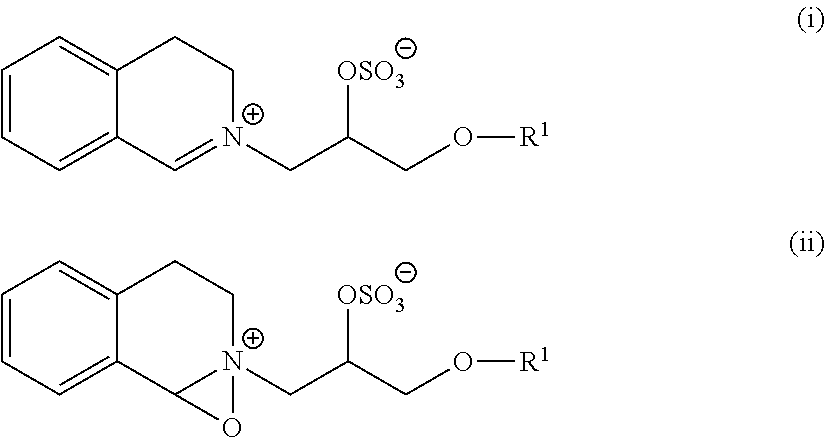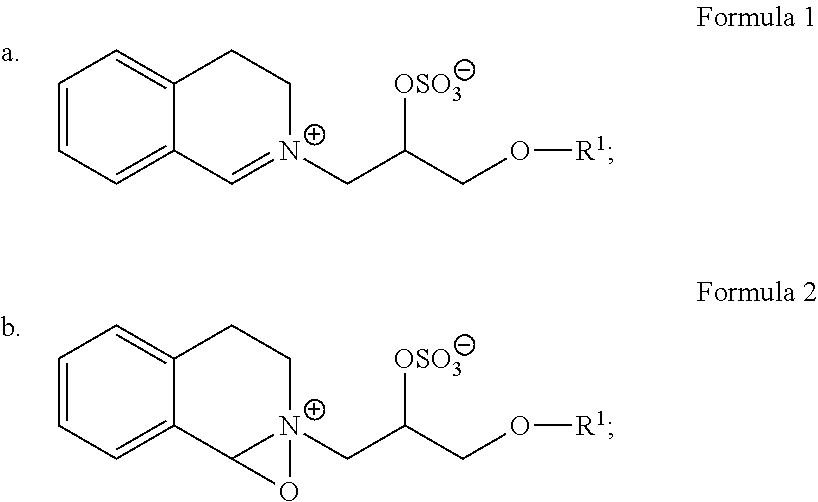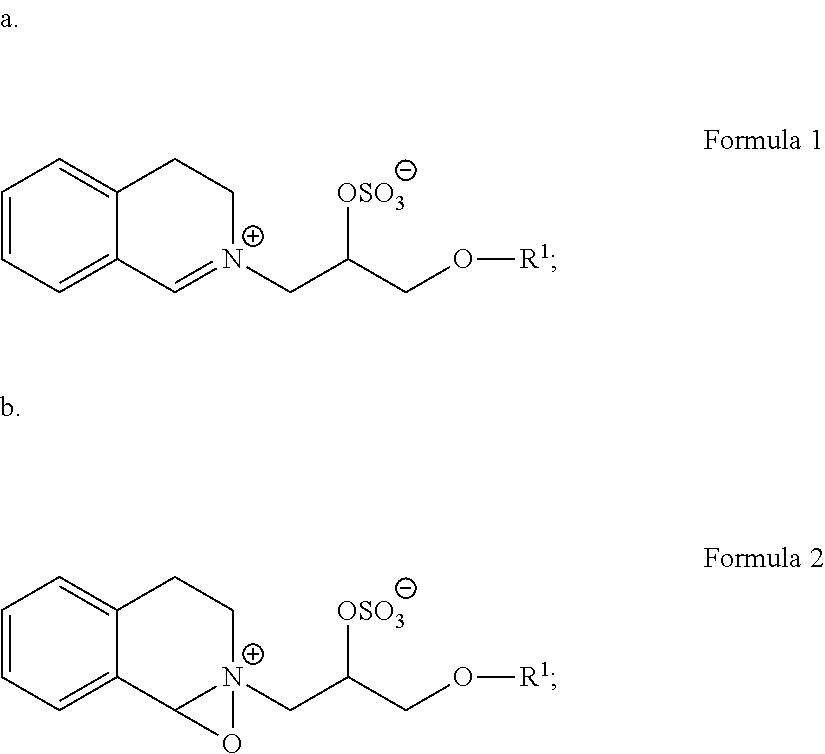Enzyme Solubility in Liquid Detergent and Use of Detergent Composition
a technology of enzymes and detergents, applied in detergent solvents, surface-active detergent compositions, detergent compositions, etc., can solve the problems of difficult dissolution of enzymes in detergents, more difficult formulation, etc., to reduce the tendency of pilling, prevent or reduce the redeposition of soils, and prevent or reduce dye transfer.
- Summary
- Abstract
- Description
- Claims
- Application Information
AI Technical Summary
Benefits of technology
Problems solved by technology
Method used
Image
Examples
example 1
[0386]The detergent composition according to the present invention is prepared as set out below and is tested according to the mentioned wash assays.
TABLE 3Example 1 shows a detergent composition.Detergent 1w %LAS (C9-C15 Alkylbenzene sulfonic acid)20%sodium lauryl ether sulfate10%NI C13-7EO24%Steraric acid11%Ethanolamine 8%Citric Acid 1%water 6%EthanolMPG20%GlycerolSorbitolSUM weight100% SUM δ (solvents, polyol, water, ethanolamine)11.17SUM δ h (overall)13.12SUM δ h (solvents, polyol, water, ethanolamine) 8.48
[0387]General method of preparation for low water detergents: water; polyol; 75% of ethanolamine and stearic acid are mixed and heated to 60° C. until dissolved; LAS; sodium lauryl ether sulfate are added in small portions with full dissolution inbetween keeping pH alkaline with addition of ethanol amine as required. Heat is turned off and nonionic (C13-7EO) is added and dissolved followed by addition of citric acid in small portions and rest of ethanol amine.
example 2
[0388]The detergent compositions according to the present invention are prepared as set out below and are tested according to the mentioned wash assays.
TABLE 4Example 2 shows a detergent composition.Detergent 2Detergent 3Detergent 4Detergent 5Detergent 6w %w %w %w %w %LAS (C9-C1520%20%20%20%20%Alkylbenzenesulfonic acid)sodium lauryl10%10%10%10%10%ether sulfateNI C13-7EO24%24%24%24%24%Steraric acid11%11%11%11%11%Ethanolamine 8% 8% 8% 8% 8%Citric Acid 1% 1% 1% 1% 1%water (single 6% 6% 6% 6% 6%molecule)EthanolMPG20%20%20%20%20%GlycerolSorbitolLipase variant20 ppm0 ppm 10 ppm20 ppm 40 ppmactive protein(T231R +N233R of SEQID NO: 2)Amylase 0 ppm300 ppm 300 ppm100 ppm 500 ppmvariant activeprotein (SEQ IDNO 14)Protease400 ppm 0 ppm600 ppm 0 ppm400 ppmvariant activeprotein (SEQ IDNO: 15)SUM weight100% 100% 100% 100% 100% SUM δ11.1711.1711.1711.1711.17(solvents,polyol, water,ethanolamine)SUM δ h13.1213.1213.1213.1213.12(overall)SUM δ h 8.48 8.48 8.48 8.48 8.48(solvents,polyol, water,ethanolam...
example 3
[0389]The detergent compositions according to the present invention are prepared as set out below and are tested according to the mentioned wash assays.
Detergent 7Detergent 8Detergent 9Detergent 10w %w %w %w %LAS (C9-C15 Alkylbenzene21% 17%20%20%sulfonic acid)sodium lauryl ether sulfate8%11%10%10%NI C13-7EO17% 28%20%20%Fatty acid (coco acid)15% 4% 5%10%Mono ethanolamine8% 4% 6% 7%Citric Acid2% 2% 2% 2%water8%13%10%10%MPG15% 21%20%16%Glycerol6% 0% 7% 5%SUM100% 100% 100% 100% SUM δ (solvents; polyol;12.7313.5614.8513.32water; ethanolamine)SUM δ h (overall detergent)14.3815.6315.9415.03SUM δ h (solvents; polyol; 9.8910.8111.6510.47water; ethanolamine)
PUM
| Property | Measurement | Unit |
|---|---|---|
| water content | aaaaa | aaaaa |
| wavelength | aaaaa | aaaaa |
| solubility | aaaaa | aaaaa |
Abstract
Description
Claims
Application Information
 Login to View More
Login to View More - R&D
- Intellectual Property
- Life Sciences
- Materials
- Tech Scout
- Unparalleled Data Quality
- Higher Quality Content
- 60% Fewer Hallucinations
Browse by: Latest US Patents, China's latest patents, Technical Efficacy Thesaurus, Application Domain, Technology Topic, Popular Technical Reports.
© 2025 PatSnap. All rights reserved.Legal|Privacy policy|Modern Slavery Act Transparency Statement|Sitemap|About US| Contact US: help@patsnap.com



